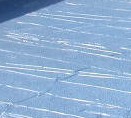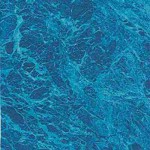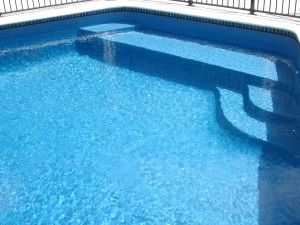This question has come up a couple of times in the last week, so I thought it was worth another mention. It can affect both inground pool vinyl membranes, and above ground pool liners.
Both are made of a PVC, which contain additives to make the material more flexible, to assist with with the rolling and processing during manufacture. These additives (known as ‘lubricants’) will sometimes sit on the surface, and make the pool liner feel rather slippery. While most people who are coming from a rough surface such as pebble are simply delighted with the texture, those who are replacing an existing liner will often feel that the new liner is too slippery. The slippery feeling is generally accentuated with replacement liners, as older liners often have small amounts of calcium build up on the surface, giving a slightly rougher texture.
The good news is that the slipperiness is only temporary, and the extra lubricants will ‘wash off’ the surface of the liner within 6-12 weeks, leaving you with the feeling of more grip underfoot.
If your pool liner is not a new installation, the most common cause of slipperiness is algae. Algae is incredibly slippery, and it is not always visible to the eye – just because you can’t see it, doesn’t mean you cant feel it!
So if its not a brand new pool, check your chemical balance. Chances are, it’s a little out of whack, and you have some algae. For the correct chemical balance for a vinyl pool interior, please refer to our Care & Maintenance document for vinyl pools and print a copy for your records.
So if you find your liner to be more slippery than expected, check the chemical balance of the pool and ensure this is correct. If it is not due to the chemical balance, but your liner is brand new, then you will find after a few months the liner will have more grip under foot.


